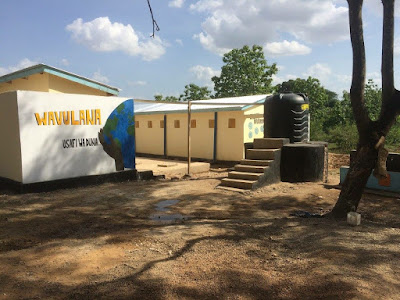As shown in previous posts, agriculture largely contributes to the East African economy. Although a very risky enterprise due to increasing rainfall variability, many East African farmers have adapted to their variable climate in very successful ways- this is often results in the modification of land- cover and/ or land- use type. These effects have shown to have significant impacts on rainfall, as well as GHG effects (Moore, 2015).
Land- use change and drivers
Some of the main land use conversions in East Africa can be summarised as:
- An expansion of cropping into grazing areas, esp. in semi- arid to sub- human areas
- An expansion of rainfed and irrigated agriculture in wetlands or along streams esp. in semi- arid areas
- A reduction in size of many woodlands and forests on land that is not protected
- An intensification of land use in areas already under crops in the more humid areas
- the maintenance of natural vegetation in most protected areas
What are the drivers of land use change in East Africa?
- Government policy, laws and regulations
- Economic factors
- Population growth and migration
- changes in land tenure arrangements
- Access to markers
- Environmental conditions
Land use and climate change
In a study 'projected land- cover change effects on East African Rainfall under climate change', Moore (2015), examines the regional responses to GHGs, Landcover/ land use change (LCLUC), and their combined effects in East Africa. The aim was to further understand how hydrological mechanisms might be altered by LCLUC in future scenarios. The four different scenarios they used were:
- Current land- cover and current climate
- current land- cover and future climate
- Future land- cover and current climate
- Future land-cover and future climate
It found that LCLUC can affect precipitation in several ways:
- Increase in albedo from the change in land cover from forest to crop lands, can result in surface cooling, which can reduce convective rainfall.
- An increase in the amount of suspended dust from overgrazing which removes large amounts of vegetation. This can result in radiative cooling, and therefore a decline in (convective) precipitation.
- Intensive rainfall is also caused by LCLUC due to an increase in intensive convection. These convection changes can enhance the local sea breeze effect. As shown previously, East Africa is already and will face more extreme weather events due to increased GHGs. LCLUC has the potential to increase the risk to floods and damage to agriculture in coastal areas where forest has been replaced with agriculture.
Results show that GHG and LCLUC may slightly differ in how they alter regional precipitation patterns. One of the most important findings is that projected precipitation changes around major populated areas may be as strongly influenced by LCLUC and as by GHG effects. Precipitation in areas which have a large population density were more influenced by LCLUC than GHG, due to higher human and agricultural systems. GHG effects on precipitation, largely has wide scale implications, whereas LCLUC have more regional and local impacts.
This paper has shown that Climate change and land use change are not two separate forces affecting the distribution of precipitation; instead they are interrelated. Figure 1 clearly depicts this.
Figure 1: framework of land use/ cover linkages and flow dynamics among driving forces, bio-physical system, and climate change
Impacts on river basins
What are the impacts on river basins? A study on the Mara River Basin, Kenya found that any further conversion of forests to agriculture and grassland in the basin headwaters is likely to reduce dry season flows and increase peak flows, leading to greater water scarcity at critical times of the year and exacerbating erosion on hillslopes.
Most projections call for precipitation increase of 5-10% in this century. This can suggest greater future availability of water resources in this basin. However, results from this study conclude that together with increases in evapotranspiration (from warmer temperatures) and potential increases in aquifer recharge, runoff will be limited. Water balance showed non- linear responses to climate change. Small decreases precipitation may produce large reduction in runoff because of reduced runoff and increased evaporation.
Therefore, model results support protecting headwater forests and indicate that additional emphasis should be placed on improving land management practices that enhance infiltration and aquifer recharge as a part of a wider program of climate change adaptation.
Concluding thoughts
This post has shown that land use change does have a large influences over change in precipitation. Although, these may be localised in comparison to climate change, they should be incorporated into rainfall projections, as well as mitigation and adaptation strategies.
r





Hi Rhona, Very enlightening post on the importance of land use change which is often overshadowed by climate change. Since climate models are often so uncertain anyway, as well as the further complication of the effects of current and future land use across Africa, do you think climate models are still important when it comes to looking at water in Africa?
ReplyDeleteHi Jeannie, thank you, hope you enjoyed the read. Climate models are definitely uncertain for the first half of this century, but latter half holds much more certainty in predictions.
DeleteModels are still very important, but i think as i said in the post, that it is important that localised models are produced including the land use change. Models however can be inaccurate, for example the IPCC projected that East Africa will get wetter, but t is actually getting drier.
Despite this Models are very important in terms of management, as this is very site specific. However, i believe that more focus needs to be made upon the impacts of this projections, and effective mitigation and adaptive strategies. As these projections are quite pointless, unless we are going to do something about them